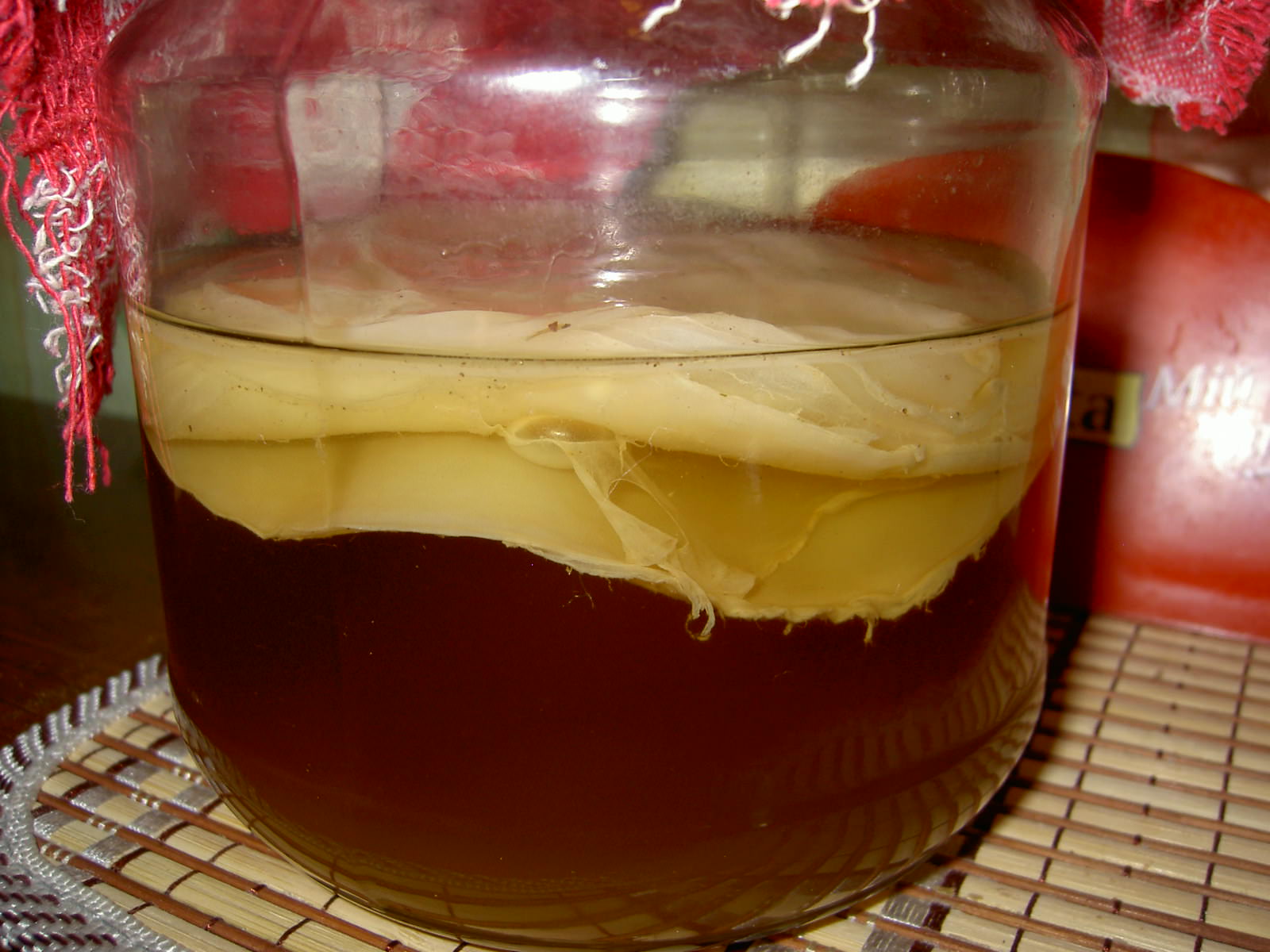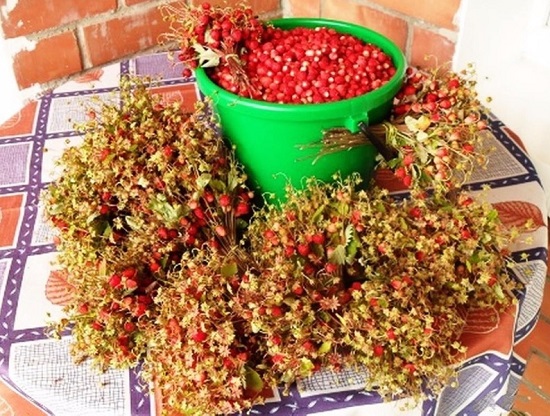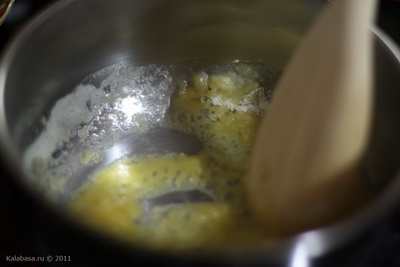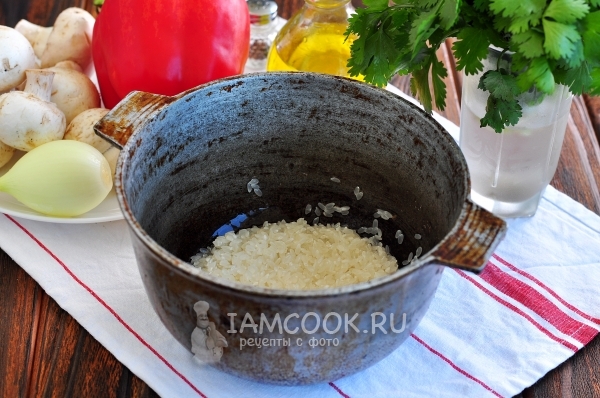A few words about the difference between vodka and whiskey. What is better, what is more harmful than what is different? The difference between vodka and moonshine
Perhaps, not a single full-fledged feast is complete without strong alcoholic drinks. After all, it is to them that the special half of humanity has a special “love”. The most frequent guest on the tables of our compatriots invariably remains vodka. Worthy competition to her is homemade moonshine, which is a purely natural product. In Russia, there are many supporters of both the first and the second alcoholic drink. Many do not see a significant difference between them, using both amusing "elixir" with the same enthusiasm. In this article we will look at how vodka is different from moonshine.
Definitions
VodkaVodka - strong alcoholic drink. It is a mixture of rectified (highly purified) ethanol with corrected water. In insignificant quantities use of various flavoring additives is allowed. At the moment, the industrial production of vodka is established in many countries. The strength of the drink can range from 37.5 (according to EU legislation) to 56% (according to Russian standards). For the first time vodka was brought to our country in the distant XIV century. Initially, it was called “bread wine” and was made on the basis of grain raw materials. The term "vodka" was used only in the XVIII century. At that time, it meant strong alcoholic beverages infused with herbs, berries and other herbal ingredients. Vodka was given a name depending on the main flavoring: caraway, anise, etc. The term has received its modern meaning relatively recently. According to GOST from 1936, the solution of purified ethanol in water began to be called vodka.
 Moonshine
Moonshine Moonshine - strong alcoholic drink. It is made at home with the help of special devices. The latter can be both homemade and factory production. In essence, the drink is a product of artisanal distillation. It is obtained by distilling the alcohol-containing mass, which is formed as a result of the fermentation of syrup, saccharified cereals, vegetables, fruits and other ingredients. Surprisingly, the nineteenth-century Russian moonshine excelled English whiskey and French cognac in quality. At that time, he was highly valued. Even the royal guardsmen for their exploits and achievements did not receive orders, but were awarded a special bucket. Its owners could drink free as much moonshine anywhere as they scooped it at a time. It is worth noting that before the 1917 revolution, any illegal alcohol was called “tavern”. The word "moonshine" in the sense of a handicraft made distillate began to be used after the coup. To date, there are a huge number of types and recipes for the preparation of this hot drink.
Comparison
Consider for a start the methods of production of alcoholic beverages of interest to us. Vodka is made on an industrial scale from a 95% strength fortune preliminarily cleaned from impurities of grain or potato alcohol. This process is referred to as rectification and is carried out using special columns (photo). The resulting alcohol is mixed with soft water, past several degrees of purification. The liquid is additionally filtered, and in the case of a premium product, it is also treated with egg white, milk, silver, etc. Various additives are also allowed, giving the drink a specific taste and aroma. Such vodka belongs to the category of “special”. Regardless of the ingredients used, the drink is absolutely clear and transparent. It has a characteristic alcoholic taste and smell.
 Distillation columns
Distillation columns The main difference between vodka and moonshine is that the latter is made at home by distillation using a special apparatus (photo). It is based on mash, which is obtained from sugar and yeast. As mentioned above, moonshine is a product of artisanal distillation of alcohol-containing mass. It contains various impurities that give the drink a distinctive taste and color. As for the flavor, it can be called very specific. Unsold distilled moonshine usually turns cloudy. It contains fusel oil, giving the additional load on the liver. While from vodka such impurities are removed during the cleaning process. The strength of the last drink in most cases is 40 degrees. While the alcohol content in moonshine can reach up to 70%.
 Alcohol mashine
Alcohol mashine It is quite obvious that vodka in comparison with moonshine has gained much greater popularity and recognition in the world. In many cities, such as Amsterdam, Moscow, Smolensk, Uglich, there are museums dedicated to this drink. Whereas moonshining is prohibited by law in many countries. In Russia, the production of a drink for personal consumption has been officially authorized since 2002.
To summarize, what is the difference between vodka and moonshine.
| Vodka | Moonshine |
| Production is based on the rectification process. | It is obtained by distillation. |
| The main raw material is refined cereal or potato alcohol | Prepared on the basis of mash made from sugar and yeast |
| Produced on an industrial scale | Manufactured for personal consumption at home |
| The average strength of the drink is 40% | The alcohol content can be up to 70%. |
| It is a completely clear liquid with a characteristic alcoholic taste and odor. | It turns turbid, has a specific taste and aroma. |
| It is thoroughly cleaned of impurities. | Contains fusel oil, giving additional load on the liver |
| Won widespread worldwide | Drink production is prohibited by law in many countries. |
Vodka is a clear liquid based on purified ethyl alcohol with a strength of 40 °. Cognac is an alcoholic drink, the content of alcohol is not inferior to vodka, but the color is from golden to rich coffee. No feast is complete without them, but vodka is easier to drink due to the absence of impurities, while cognac contains enough of them.
Differences of cognac and vodka
They are united only by a fortress, differing in color, smell and production technology. Vodka is made according to GOST from grain raw materials, but many enterprises use cheap analogues: sugar beet, potatoes and waste sugar production products. Raw materials boil, subject to yeast fermentation. The resulting home brew goes through several stages of purification to obtain ethanol. It is diluted to 40% with water without salts and impurities. Ideally, these are natural sources located deep in the rocks.
Vodka contains a certain concentration of alkali, acetaldehyde, fusel oils and saturated fats. Also calcium, sodium, esters.

Dilute the alcohol filtered using activated charcoal, milk or potato starch. Add plant extracts (birch buds, pine nuts, honey), natural berry juice (mountain ash, cranberries). The mixture is re-filtered, then bottled and closed. When buying, they prefer vodka:
- packaged in tare of the original form of perfume glass;
- with a label directly attached to the bottle with no traces of glue;
- in bottles with an aluminum cap having a divider;
- the date on the container from which it is not erased, but is marked with a laser;
- made on the basis of grain alcohol "Alpha", "Super", "Lux".
Cognac from vodka differs a long production process. On the shelves of stores in Russia is full of bottles with 40 ° brandy, which in fact is brandy. The real varieties of the drink make up only 2% of the total number of presented specimens. Cognac is made from white and pink grape varieties, contains acids, esters, alcohols, aldehydes. From the berries get the juice, which is left to ferment without adding sugar. The resulting wine is distilled several times in copper cubes to obtain brandy alcohol strength of 60 °.

It is poured into barrels made of oak without nails. Raw materials withstand at least 2.5 years. The maximum period is 50 years. The final stage is the mixing of alcohol from different batches to obtain taste and aroma. Manufacturers add caramel, vanilla, infusion of oak sawdust to impart color. If necessary, the drink is diluted with clean water to the desired strength.
Comparison of effects on the body
To assess the impact of strong alcoholic beverages on the body, it is necessary to take into account the momentary component and promising. In other words - the effect of intoxication and hangover.
Also important are the daily dose (no more than 30 ml) and the rules of use. With the abuse of any strong alcohol becomes a poison that disrupts the cardiovascular, nervous, respiratory, urinary systems and the brain.
Benefit
Vodka within the permissible dose of 30 ml of a day helps to warm up due to the expansion of blood vessels, causes appetite. For therapeutic purposes, it is used:
- mixing with salt to stop gastrointestinal disorders;
- adding black or red pepper to ease the course of colds;
- as external as compresses.
Vodka a single volume of 30 ml can be used for people with diabetes and obesity, because it does not contain sugar. Chilled vodka is not drunk in one gulp, but slowly filtered through its teeth.

Cognac in a volume not higher than 30 ml has a number of positive effects on the body:
- muscle relaxation;
- dilation of blood vessels and lowering blood pressure;
- increased appetite;
- acceleration of metabolic processes;
- relief of colds and diseases of the respiratory system due to the high content of tannins.
Consider the correct use of 30 g of cognac at room temperature, preheated in a glass (it must be held in the hands). They drink in small sips, and as a snack they use cheese and bitter chocolate.
Harm
Vodka and brandy when the permissible daily dose is exceeded are toxins dangerous for the body. And the second is removed by the liver longer due to the large amount of impurities, and vodka causes quick addiction. Other adverse effects are:
- destruction of brain neurons;
- severe liver intoxication;
- damage to the cardiovascular system, contributing to the development of arrhythmias, hypertension or ischemia;
- renal dysfunction, manifested by swelling of tissues.
Abuse of strong alcohol is contraindicated in chronic diseases of the liver, kidneys, heart and blood vessels, gastric ulcer and duodenal ulcer. Drink brandy with caution to people with diabetes, low blood pressure.
Regardless of the drink chosen, the poisoning effect will be long. Especially dangerous manifestations of toxic action, if you drink brandy and vodka in the form of a cocktail in any sequence. Therefore, they are better not to interfere, observing the culture of drinking. Cognac to drink with grape-based alcohol, vodka - with alcohol-based drinks.
Test: Check your drug's compatibility with alcohol
Enter the name of the drug in the search box and find out how compatible it is with alcohol.
There is a pattern. At celebrations, banquets and home gatherings, preference is given to vodka. If you use strong drinks at business meetings or quiet friendly evenings, you will certainly drink whiskey.
There is interest, what is the difference between alcohol-containing drink and whether there is a significant difference between it. It turns out that drinks are similar only in one: they are strong alcohol. The remaining data is completely different.

Whiskey or vodka?
Production technology is significantly different. Each of them undergoes a long process of cleaning, sterilization and filtration, but is made from different technological raw materials.

- Vodka - this a mixture of well-purified ethyl alcohol and distilled water that has undergone special purification. The standard strength of vodka is determined by a forty degree index. Sometimes some varieties have a higher percentage of strength and are complemented by aromatic additives. A certain production scheme has been established, but each manufacturer has its own secrets, which consist in additional methods of cleaning and filtering.
- Whiskey - on production technology composition similar to ordinary moonshineas it has the same taste and smell. The drink is made from the best high-quality varieties of cereals, undergoes a long process of settling. It is aged for years in oak tanks and eventually gets its golden color. The greater the shutter speed, the darker, richer the raw material and, accordingly, the higher the cost.

Taste differences
The difference in cooking determines the taste, color and quality. Taste differences of these types of alcohol are significant. You do not have to be a big dock in the use of alcoholic beverages to understand the difference.

Transparent and tasteless
- Vodka determined not only by its purity and transparency. Alcohol may have a soft and light taste. Have a quality product completely there is no pronounced smell. But they always drink vodka in one gulp and few will call it tasty. Some manufacturers to highlight the transparency put a strong liquid in a bowl of bluish glass.
- Whiskey differ in taste, depending on the extract, and names. Scotch whiskey or bourbon stand out with different shades of colors, a separate aroma characteristic of the drink and has its own taste. From the time and languor in barrels, the compositions acquire the taste of chocolate, vanilla, cinnamon and coffee. Connoisseurs, without conducting tastings, can determine the quality and age of alcohol by their characteristic aroma.

Differences in taste
How to drink
Drinking culture has existed for a long time, but the huge difference in taste data of alcohol and the cost of the product is accompanied by striking differences in use. Few people know how to drink and units adhere to established drinking standards.

With pickled cucumber
- Vodka - national laughing product. Only in the countries of the former Soviet Union they drink it undiluted, cooled or icy. The drink is usually poured into small glasses, from which it is more convenient to tip the liquid in one gulp. The use of vodka is usually accompanied by a rich and nourishing snack. The drink is drunk, albeit in small portions, but in large quantities. In Western countries, vodka is used as the basis for cocktails, since its composition has no taste or smell.
- Whiskey - noble and refined. Big connoisseurs enjoy his taste all alone, savoring every sip. Sometimes a small amount of amber liquid is drunk in small sips for several hours. Whiskey is used for casual conversation and negotiations. Drink in small doses to maintain the tone and pep. Whiskey lovers do not have the goal of severe intoxication.

With ice - a classic way of drinking whiskey
What drink is more harmful
Everyone knows that alcohol is harmful to health and there is no definition of which drink is more harmful and which is useful. You can drink everything, but in small quantities. All alcoholic beverages with frequent use are addictive and cause irreparable harm to health. Any alcohol contains alcohol, and there is no use in alcohol-containing products.
However, the harmfulness of vodka can be distinguished especially, since it quickly expands blood vessels and in the same way narrows. The fire drink will cause irreparable harm to people suffering from diseases of the stomach, liver and kidneys.
With regular use of vodka quickly comes addiction and leads to alcoholism.

Science has been studying the phenomenon of alcohol addiction for decades, but it never came to a common opinion. Conclusions are always ambiguous. Each organism is individual and perceives alcohol in its own way. In small quantities, some alcohol-based drink is even beneficial. For example, whiskey in meager doses increases the tone.
The difference in drunkenness and hangover
Those who want to quickly reach intoxication prefer vodka. In the shortest possible period, you can get the desired result. The drink is usually accompanied by a rich snack and from the connection of fusel oils and food, the hangover syndrome passes quickly and easily.
Fans of whiskey drink in small portions, slowly and for a long time without diluting the consumed alcohol with any food. In this case, intoxication does not come soon, and the hangover state on the next day proceeds quite hard, with all sorts of painful symptoms.
Experts noted that even a small portion of whiskey, regardless of cost, causes a serious hangover. Whiskey is considered a surrogate for alcohol and its composition is compared with poor-quality moonshine. A set of impurities gives the load on the body more than vodka.

Vodka and brandy are among the most common alcoholic beverages in our area. They are not at all alike, they have a lot of advantages, but it’s a matter of taste to determine what cannot be better. To accurately understand the difference between vodka and skate, it is enough to know the technology of preparation.
Story
Vodka is the ideal ratio of water and alcohol, now they use ethyl alcohol, only grain alcohol was used before, therefore vodka was called bread wine. This drink appeared in the 15th century in Russia, is considered to be the Russian national drink, in the people it is also called the second currency, since they often paid for small services with a “bottle” and not with money. Cognac is a French drink, originally from the southwestern part of France, in simple words it is a distilled wine. Truly cognac can only be called drinks from the south-western provinces of France, the brandy which is produced in other areas of France and the whole world is called brandy.
Production technology
The basis of both alcoholic beverages is alcohol, for real vodka - wheatfor skate - wine distillate or "cognac".
Wheat alcohol is made from refined grains, which is ground, mixed with water and left to “ferment”, as a result of which alcohol is obtained. The resulting alcohol is further purified, after which the production of vodka begins - the alcohol is mixed with water to obtain a 40 degree liquid.
Ideally, vodka has neither taste nor odor, but at the modern market there are drinks with flavors, food additives and dyes, with flavor enhancers - mainly citrus fillers. You can also find a product called " Vodka Light“That means soft vodka, its alcohol content is 35 degrees. The so-called “tinctures” are also popular, on the modern market this is ordinary vodka with the addition of extracts of cayenne pepper, horseradish, honey - as a result we have forty-degree pepper vodka, mead, etc.

Real cognac is made by fermenting special grape varieties. As soon as the wort reaches 9% alcohol, it is distilled twice. The first alcohol has a strength of 25-33%, the second - 61-72%, it is from it that cognac is made. The preparation of this drink is its extract. The alcohol obtained after the second distillation is poured into oak barrels and left for at least two years, during this period the alcohol will become "cognac", it will change color, absorb the smell and taste of wood.

Real cognac ripens in barrels, the wood of which is more than 80 years old and it is grown in certain regions - this applies only to real French cognacs. The fact that we all know how Armenian, Georgian cognac can be called cognac only in domestic markets, in international markets it is called “brandy” - this is followed by a special commission. Armenian or Georgian cognac is also a grape drink, also aged in oak barrels, only from other grape varieties, and in other regions.

How to recognize quality vodka?
Throughout the world, there are quite a few scammers who produce surrogate alcohol, the so-called "scorched vodka". This Russian drink is the most simple to falsify - there is no need for special expenses and skills. The most common counterfeit is the replacement of ethyl (food) alcohol for methyl (industrial), the use of which can have lethal consequences.

The first thing you should pay attention - excise stamp - should be free from damage and from special material, it should shine and sparkle. Shaking the bottle in the liquid should not show anything visible. Methyl alcohol has a less pungent odor and a cloudy color. Cheap ethyl alcohol of poor quality can also be used, which also stands out with a peculiar color and smell.

How to recognize a real cognac?
First of all, this is the country of origin - France, Poitou-Charentes, this information is indicated on the label. Real cognac is aged for at least 2 years. An excise stamp must meet all requirements. Typically, the imported product must be a certificate of quality. Of course, French cognac will be more expensive than Armenian.

Armenian cognac should also have all the accompanying documents, but if there is no quality certificate, the numbers should be indicated on the bottle barcode - the manufacturer’s country code, 485 for the Armenian skate. After checking the barcode you can be sure that the drink was made in the specified country.

How to distinguish colored vodka from brandy?
Nowadays, all kinds of additives, concentrates, flavors, etc. can often be found. Now there are on sale essences of various alcoholic beverages, including brandy. Manufacturers claim that, 10 ml. Essences to turn 1 liter of vodka into 1 liter of skate, this can be done not only at home, but also bought in a shop under the guise of a well-known brand. What is the difference between painted vodka and skate? The difference is that cognac has a rich, oily and slightly thickish structure - turning the bottle upside down on the walls of the bottle should be droplets of drink, and if you blur it out - big bubbles of air will rise, and then small ones.
When tasting you should pay attention to smell - when heated, real cognac changes its smell, shades of wood, tobacco, caramel, etc., are revealed, vodka with chemical additives will always smell the same. Also, cognac does not have a pronounced smell and taste of alcohol.

Strong alcohol in Russia accounts for 70-75% of total consumption. But if before vodka was the absolute leader, then in recent years its share has declined slightly due to brandy, whiskey, rum and tequila. True, not everyone still knows the difference between imported alcohol and native vodka. To fill this gap, I propose to compare whiskey and vodka on the most important indicators.
1. Technology. Vodka is a mixture of rectified (well-purified) ethyl alcohol and water. Fortress 40 degrees. In some varieties of vodka, a higher strength and (or) the presence of aromatic additives is possible. Standardized technology has allowed production in many countries, but in the world vodka is considered a traditional Russian drink. In its pure form, it is drunk only in the territory of the former USSR. In Europe and the USA, vodka is considered to be the ideal base for cocktails, because it has neither smell nor taste.
Whiskey is an alcoholic beverage made from barley, rye or corn, obtained by malting (germinating) the cereals, fermenting them, distilling the wort and keeping the finished distillate in oak barrels for several years. The fortress ranges from 40 to 60 degrees. Taste depends not only on the quality of the raw materials, distiller skill and aging in barrels is of great importance. Each region has its own requirements for production technology, there are no uniform standards. Whiskey is traditionally made in Ireland, Scotland, USA, Canada and Japan.
According to the technology of production of whiskey closer to the moonshine, it is made from only a few types of cereals, which increases the cost. In turn, alcohol for vodka is produced from any food starch-containing raw materials, for example, in a mixture with grain, potatoes, sugar beets, peas, etc. can be used.
2. Organoleptic properties. Refers to the color, smell and taste of the drink. Depending on the aging time in oak barrels, the color of the whiskey begins with a light yellow and ends with brown. The taste varies from thick to light floral, this is influenced by raw materials and the region of production. The most "heavy" are considered island Scotch whiskey, their second name - "scotch".
 Whiskey color variety
Whiskey color variety Good vodka should be moderately strong, transparent, not have taste and smell. Other requirements for its organoleptic indicators are not provided.
3. Culture of use. In this aspect, vodka and whiskey are radically different. In Russia, it is customary to drink vodka during a feast in large doses. Her taste is not important, the main thing is the result, a good snack and a cheerful company.
Whiskey is more suitable for connoisseurs of alcohol, who gather in a narrow circle in a quiet quiet place to spend time talking or other interesting activities, such as playing cards. Whiskey is drunk from special glasses in small sips, trying to catch the peculiarities of aroma and taste. Dilution or eating it is not accepted, as it interferes with perception. After tasting, whiskey is discussed by comparing the selected brand with others.
For large, noisy companies whose members are not connoisseurs of alcoholic beverages, vodka is better suited. A narrow circle of friends, connoisseurs of a bottle of good whiskey will help brighten up the rest, giving new impressions of the tasting.
4. Harm to health. There is no consensus on this. One group of researchers believes that whiskey is more harmful than vodka, because it contains more foreign impurities, for example, essential oils that are not cleaned by distillation, and vodka is a rectified substance that contains nothing but water and alcohol.
Their opponents refer to the work of Russian toxicologists under the guidance of Professor Vladimir Pavlovich Nezhny, who heads the Research Institute of Addiction Medicine of the Ministry of Health of the Russian Federation. Scientists have concluded that in excessive doses, any alcoholic beverages are destructive, but the most harmful is vodka. The problem is in the absence of third-party impurities. Because of this, the body does not immediately recognize the danger, starting to react with a delay, when the functioning of vital systems has already been disrupted.
 Vodka faster than other drinks is addictive.
Vodka faster than other drinks is addictive. Some distillate trace impurities partially protect the body from exposure to pure ethyl alcohol and in small concentrations may even be beneficial. It is known that brandy expands blood vessels, and whiskey raises the tone. Other impurities, for example, hydrocyanic acid and fusel oils in the grappa (chacha), create additional stress on the body, they are harmful.
The same research group concluded that vodka has no equal in the rate of development of physical dependence. With its regular use, alcoholism develops several times faster than from brandy or whiskey.
The conclusion is confirmed by statistics. In countries where distillates are preferred (brandy, calvados, whiskey, bourbon, etc.), this is Ireland, France and the USA, the number of alcoholics per 100 thousand inhabitants is much lower than in those where rectified ethyl alcohol is popular. Most pure vodka is drunk in Russia, Ukraine and Finland.
5. Drunkenness and hangover. Subjective indicators, depending on the individual characteristics of the human body, they are difficult to analyze. Theoretically, with the same amount of alcohol consumed, intoxication and the degree of hangover are determined by the concentration of third-party substances in the drink. In this case, good vodka can be taken as a point of reference, since it does not contain impurities.
But we know that, depending on the chemical structure, impurities in distillates are useful and harmful. This means that the hangover from a good whiskey will be less than that from vodka, since the substances in it partially block the negative effects of alcohol. In the case of a bad whiskey, the situation is reversed - rapid intoxication with a strong hangover the next day.
P.S. Drink vodka or whiskey everyone decides for himself. In many ways, the choice depends on financial capacity, the nature of the feast and the company. Both drinks in question have the right to be on your table. The purpose of this article was to show the difference between them, and not to determine the best.



















